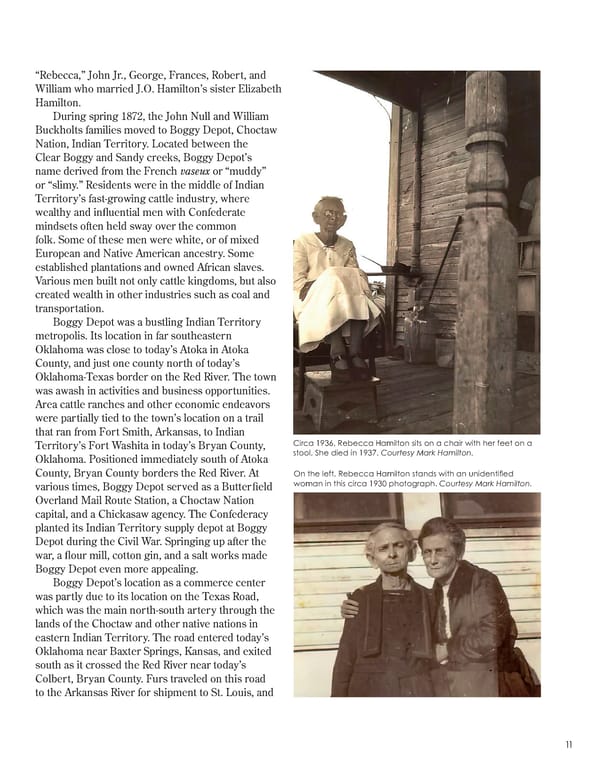“Rebecca,” John Jr., George, Frances, Robert, and William who married J.O. Hamilton’s sister Elizabeth Hamilton. During spring 1872, the John Null and William Buckholts families moved to Boggy Depot, Choctaw Nation, Indian Territory. Located between the Clear Boggy and Sandy creeks, Boggy Depot’s name derived from the French vaseux or “muddy” or “slimy.” Residents were in the middle of Indian Territory’s fast-growing cattle industry, where wealthy and influential men with Confederate mindsets often held sway over the common folk. Some of these men were white, or of mixed European and Native American ancestry. Some established plantations and owned African slaves. Various men built not only cattle kingdoms, but also created wealth in other industries such as coal and transportation. Boggy Depot was a bustling Indian Territory metropolis. Its location in far southeastern Oklahoma was close to today’s Atoka in Atoka County, and just one county north of today’s Oklahoma-Texas border on the Red River. The town was awash in activities and business opportunities. Area cattle ranches and other economic endeavors were partially tied to the town’s location on a trail that ran from Fort Smith, Arkansas, to Indian Territory’s Fort Washita in today’s Bryan County, Circa 1936, Rebecca Hamilton sits on a chair with her feet on a Oklahoma. Positioned immediately south of Atoka stool. She died in 1937. Courtesy Mark Hamilton. County, Bryan County borders the Red River. At On the left, Rebecca Hamilton stands with an unidentified various times, Boggy Depot served as a Butterfield woman in this circa 1930 photograph. Courtesy Mark Hamilton. Overland Mail Route Station, a Choctaw Nation capital, and a Chickasaw agency. The Confederacy planted its Indian Territory supply depot at Boggy Depot during the Civil War. Springing up after the war, a flour mill, cotton gin, and a salt works made Boggy Depot even more appealing. Boggy Depot’s location as a commerce center was partly due to its location on the Texas Road, which was the main north-south artery through the lands of the Choctaw and other native nations in eastern Indian Territory. The road entered today’s Oklahoma near Baxter Springs, Kansas, and exited south as it crossed the Red River near today’s Colbert, Bryan County. Furs traveled on this road to the Arkansas River for shipment to St. Louis, and 1111 3535
 December 2021 Oklahoma Hall of Fame Magazine Page 12 Page 14
December 2021 Oklahoma Hall of Fame Magazine Page 12 Page 14